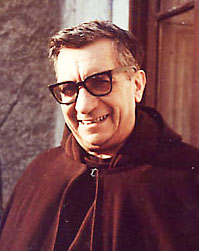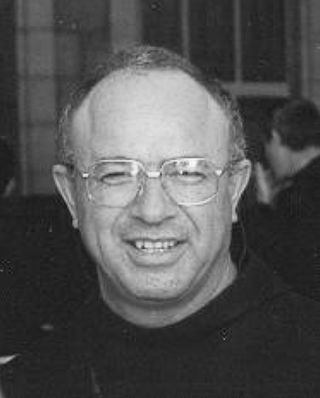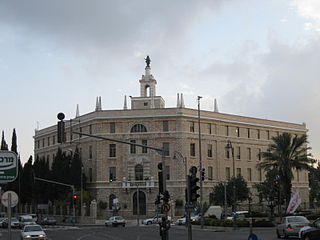Related Research Articles

Mamre, full name "Oaks of Mamre", refers to an ancient religious site originally focused on a single holy tree growing "since time immemorial" at Hebron in Canaan. At its first location, Khirbet Nimra, a pagan tree cult predated the biblical narrative. It is best known from the biblical story of Abraham and the three visitors. The tree under which he had pitched his tent is known as the oak or terebinth of Mamre. Modern scholars have identified three sites near Hebron which, in different historical periods, have been successively known as Mamre: Khirbet Nimra, Ramat el-Khalil, and Khirbet es-Sibte. The last one contained an old oak tree identified by a relatively new tradition as the Oak of Mamre, which has collapsed in 2019, and is on the grounds of a Russian Orthodox monastery.

James the Just, or a variation of James, brother of the Lord, was a brother of Jesus, according to the New Testament. He was the first leader of the Jerusalem Church of the Apostolic Age. Traditionally, it is believed he was martyred in AD 62 or 69 by being stoned to death by the Pharisees on order of High Priest Ananus ben Ananus. James, Joses, Simon, and Judas are mentioned as the brothers or siblings of Jesus as well as two or more unnamed sisters.

Mount Nebo is an elevated ridge located in Jordan, approximately 700 metres (2,300 ft) above sea level. Part of the Abarim mountain range, Mount Nebo is mentioned in the Bible as the place where Moses was granted a view of the Promised Land before his death. The view from the summit provides a panorama of the West Bank across the Jordan River valley. The city of Jericho is usually visible from the summit, as is Jerusalem on a very clear day. The biblical town of Nebo, now known as Khirbet al-Mukhayyat, is located 3.5 km away.

Machaerus was a Hasmonean hilltop palace and desert fortress, now in ruins, located in the village of Mukawir in modern-day Jordan, 25 km (16 mi) southeast of the mouth of the Jordan River on the eastern side of the Dead Sea.

Zoara, called Zoar/Tzoar or Bela in the Hebrew Bible, Segor in the Septuagint, and Zughar by medieval Arabs, was an ancient city located in the Dead Sea basin in the Transjordan.

The Studium Biblicum Version is the predominant Chinese language translation of the Bible used by Chinese Catholics. It is considered by many to be the Chinese Catholic Bible.

Bethoron, also Beth-Horon, were two neighboring towns in ancient Israel, situated on the Gibeon–Aijalon road. They served as strategic points along the road, guarding the "ascent of Bethoron". While the Hebrew Bible sometimes distinguishes between the two towns—Upper and Lower Bethoron—it often refers to both simply as Bethoron. The towns are mentioned in the Bible and in other ancient sources: Upper Bethoron appears in Joshua 16:5, Lower Bethoron in Joshua 16:3, both in 1 Chronicles 7:24, and the ascent in I Maccabees 3:16.

Umm ar-Rasas, ancient name: Kastron Mefa'a, is located 30 km southeast of Madaba in the Amman Governorate in central Jordan. It was once accessible by branches of the King's Highway, and is situated in the semi-arid steppe region of the Jordanian Desert. The site has been associated with the biblical settlement of Mephaat mentioned in the Book of Jeremiah. The Roman military utilized the site as a strategic garrison, but it was later converted and inhabited by Christian and Islamic communities. In 2004, the site was inscribed as a UNESCO World Heritage Site, and is valued by archaeologists for its extensive ruins dating to the Roman, Byzantine, and early Muslim periods. The Franciscan academic society in Jerusalem, Studium Biblicum Franciscanum (SBF), carried out excavations at the north end of the site in 1986, but much of the area remains buried under debris.

The Catholic Church in Israel is part of the worldwide Catholic Church, in full communion with the Holy See in Rome. The Catholic Church in Israel is divided into three main jurisdictions: the Latin Patriarchate of Jerusalem, the Franciscan Custody of the Holy Land, and the Salesian Mission. Each of these jurisdictions has its own responsibilities and areas of operation.
Studium Biblicum Franciscanum (SBF), Latin for 'Franciscan Biblical Studies', is a Franciscan academic society based in Jerusalem. It is a center of biblical and archaeological research and studies, established by the Franciscan Custody of the Holy Land.

Bellarmino Bagatti was a 20th-century Italian archaeologist and Catholic priest of the Franciscan Order.

Gabriele Allegra was a Franciscan friar and Biblical scholar. He is best known for accomplishing the first complete translation of the Bible into the Chinese language. His Studium Biblicum Translation is often considered the definitive Chinese Bible among Catholics. He was beatified in 2012.

Gerasimus of the Jordan was a Christian saint, monk and abbot of the 5th century AD.
Early Christianity, otherwise called the Early Church or Paleo-Christianity, describes the historical era of the Christian religion up to the First Council of Nicaea in 325. Christianity spread from the Levant, across the Roman Empire, and beyond. Originally, this progression was closely connected to already established Jewish centers in the Holy Land and the Jewish diaspora throughout the Eastern Mediterranean. The first followers of Christianity were Jews who had converted to the faith, i.e. Jewish Christians, as well as Phoenicians, i.e. Lebanese Christians. Early Christianity contains the Apostolic Age and is followed by, and substantially overlaps with, the Patristic era.
Moussa El-Hage, is a Maronite Catholic eparch, now Archbishop of the Archeparchy of Haifa and the Holy Land and Patriarchal Exarch of Jerusalem and Palestine and Jordan.

Stanislao Loffreda, O.F.M., is an Italian Franciscan friar, archaeologist, Palestinian pottery expert and Bible scholar.
John the Stylite, also known as John of Litharb, was a Syriac Orthodox monk and author. He was a stylite attached to the monastery of Atarib and part of a circle of Syriac intellectuals active in northern Syria under the Umayyad dynasty.

Michele Piccirillo (1944–2008) was a Franciscan priest and expert in Byzantine archaeology. He is credited with advancing the study of early Byzantine archaeology, and especially the study of mosaics, in Jordan, Palestine and Syria.

Terra Sancta College of Jerusalem serves as the cultural centre of the Franciscan Custody of the Holy Land and as a succursal institution (dependency) of Saint Saviour's Latin parish. It was initially created in the 1920s as a school for the children of Jerusalem, regardless of their religious affiliation. It stands at the southwestern extremity of the Talbiyeh neighbourhood of West Jerusalem, on the corner of Paris Square.

The Terra Sancta Museum is a network of museums managed by the Custody of the Holy Land and located in the Old City of Jerusalem. It originated from the first "Museum of the Franciscan Fathers" opened in 1902 to exhibit the results of archaeological excavations conducted in the Holy Land by the Studium Biblicum Franciscanum. Today it includes the Terra Sancta Museum - Archaeology situated at the Church of the Flagellation and the Terra Sancta Museum - Art and History located at the Monastery of Saint Saviour.
References
- ↑ Fortescue, Adrian (1910). . In Herbermann, Charles (ed.). Catholic Encyclopedia . Vol. 8. New York: Robert Appleton Company. p. 356.
- ↑ Eusebius' Historia Ecclesiastica, IV, v.:
"I have learned this much from writings, that until the siege of the Jews, which took place under Adrian, there were fifteen bishops in succession there, all of whom are said to have been of Hebrew descent, and to have received the knowledge of Christ in purity, so that they were approved by those who were able to judge of such matters, and were deemed worthy of the episcopate. For their whole church consisted then of believing Hebrews who continued from the days of the apostles until the siege which took place at this time; in which siege the Jews, having again rebelled against the Romans, were conquered after severe battles."
- ↑ A. Mertens, A., ed. (1980). Who was a Christian in the Holy Land?. p. 227.
Tobias, Saint, 5th bishop of Jerusalem, 2nd century. His feast is on December 17. (AA.SS.) He is mentioned on September 17 and September 20.
- "Introductory page to Who was a Christian in the Holy Land? encyclopedia, compiled by: A. Mertens, Franciscan Father". Christusrex.org. Archived from the original on 2018-02-14.
The copy preserved in the Library of SBF Jerusalem has this hand-written note in French by the author: 'Par ma fonction dans la bibliothèque du Studium Biblicum Franciscanum, je pus compiler ce livre. Père Mertens. 9 juillet 1980'
- The Biblioteca dello Studium Biblicum Franciscanum (SBF Library) catalogue record:
- Mertens, A. (1977). Who Was a Christian in the Holy Land? Help for Individual Pilgrims . Jerusalem; Mechelen, Belgium: Custodia Terrae Sanctae.
- "Introductory page to Who was a Christian in the Holy Land? encyclopedia, compiled by: A. Mertens, Franciscan Father". Christusrex.org. Archived from the original on 2018-02-14.
- ↑ "Feast of the Bishops of Jerusalem – May 17". Vicariat Saint-Jacques pour les catholiques de langue hébraïque en Israël.